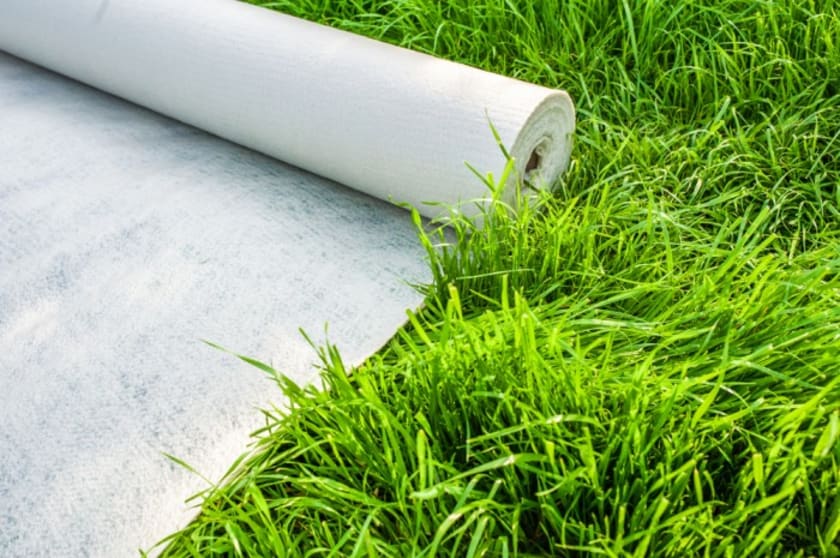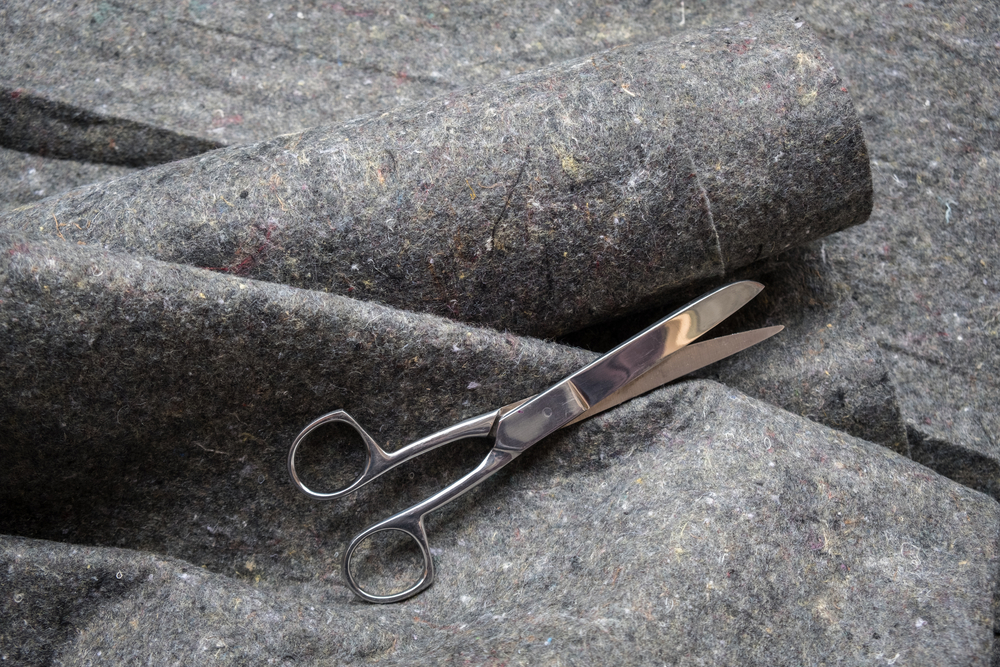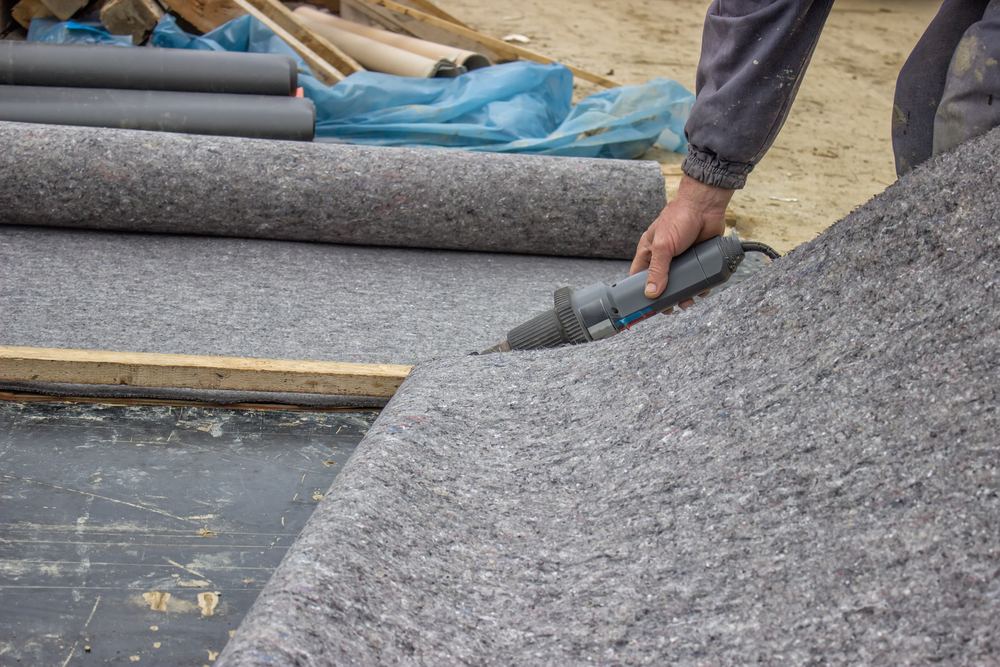The Future of Geotextiles



Geotextiles are born out of textile engineering and civil engineering coming together and are an essential tool in the construction of civil engineering projects. They reinforce geotechnical constructions and prevent water from seeping into the underlying soil.
Geotextiles are, also known as geosynthetics, are unique fabrics with a high thread density and high intrinsic strength. They are bacteria-resistant and can be used for erosion control, streambank stabilization, and even landfill liners.
This blog will discuss everything about geotextiles, types and uses and shed light on how they can be used in the growth of our planet by preventing water from seeping into the underlying soil.
What Are Geotextiles?
Geotextiles are polymer fabrics made from polypropylene and polyester. They are also known as filter fabrics because they can separate, filter, reinforce, protect, or drain soil particles. Today, they are gaining popularity in the world of construction as these fabrics are being used to serve a variety of purposes, including erosion control, as a support medium, and a medium for growing plants such as grasses and flowers.
Geosynthetics are woven fabrics that allow water and air to pass through while keeping soil together. Their use has increased with the increased availability of synthetic fibres. Geosynthetics come in two categories; natural and synthetic. Natural geosynthetics are made from natural fibres such as jute, hemp, or cotton, while synthetic fibres are spun and woven together to form a fabric that can have many uses. Synthetic fibres use materials such as polypropylene, polyester, and nylon. These fabrics are often used in construction to serve a variety of purposes.
There are three major types of Geotextiles, and each serves a different purpose.
Types Of Geotextiles

There are three major types of Geotextiles, and they can be differentiated based on their purpose.
Woven
Woven Geotextiles, also known as open-mesh textiles, are made of polypropylene. Interlocking fabric strips adds stability and strength to the structure as polypropylene can sustain huge tension. The purpose of woven geotextiles is to separate and reinforce soil particles. They are categorized into woven monofilament, woven multifilament, woven slit-film monofilament, and slit-film multifilament.
Non-woven
Non-woven geotextiles are made by entangling synthetic fibres using thermal, chemical, or mechanical techniques or by combining two or all of the methods. The primary purpose of non-woven geotextiles are separate, filter, and protect. They are resistant to chemical and biological media in soil. They also provide extended resistance to sunlight and are majorly used in groundwaters because they can not be dissolved by water.
They are categorized into continuous filament heat bonded. Continuous filament needle punched, staple needle punched, resin bonded, etc., based on their bonding technique.
Knitted
As the name suggests, knitted geotextiles are made using knitting technology - a series of loops from yarn are interlocked together. Sometimes the knotted technique is combined with weaving to make knitted geotextiles. Good flexibility and affordable prices set them apart from other counterparts. They are preferable for drainage and soil erosion control.
Materials Used
Natural and synthetic fibres are used in the making of Geotextiles. Depending on the use case, fibres are selected.

Synthetic Fibres:
- Polyethene (PE)
- Polyester (PSF)
- Polypropylene (PP)
- Polyamide (PA)
Natural Fibres:
- Jute
- Flax/coir
- Coconut (Coir) Matting
- Cotton
- Hemp
- Straw
Applications Of Geotextiles
In Road Industry
The primary purpose of using geotextiles in road construction is:
- To separate layers of different sized particles from one another.
- To drain water from the subsoil.
- To filter water and soil particles.
- To distribute the load evenly.
In Retaining Walls
Their reinforcement characteristics are utilized in construction walls made of timber, precast panel and segmental block facing. It is comparatively affordable. Woven geotextiles in retaining walls offer other advantages like simplified installation and construction and less labour cost.
In Subsurface Drainage
Geosynthetics provide consistent, continuous filters, simplify construction and reduce material costs. It also creates less environmental impact. Woven and non-woven geosynthetics are used to drain stable, coarse-grained soils. Non-woven geosynthetics are preferred to retain fine soil particles.
For Erosion Control
Their high strength makes them preferable to use for erosion control in drainage channels, shorelines, and bridge and pier scour protection systems.
In Waste Containment
Geotextiles with strong physical properties and high quality are used in cleanup projects and waste containment.
Railroad Stabilization
Non-woven geotextiles are used to stabilize rail tracks for their high strength properties.
They are used in various applications to separate, filter, drain, and reinforce soil. But they can not be used in certain projects. Let us explore the advantages and disadvantages of geotextiles.
Advantages of Geotextiles
- Geotextiles reduce erosion of soil and improve soil strength.
- They are cost-saving materials in civil engineering work.
- They help improve the overall quality of the project.
- They create less impact on the environment, making them more sustainable than other counterparts.
- Using geosynthetics in reinforcement and drainage applications improves the speed of construction projects.
- As geosynthetics are lighter in weight, handling and using them on construction sites is more manageable. It also saves transport and labour charges.
- The high tear strength makes them preferable.
- Geotextiles are multipurpose and can be used in various projects like stadiums, shopping malls, parking lots, sports complexes etc.
Disadvantages of Geotextiles
- Geotextiles are complicated to install and use and need skilled professionals.
- They are not suited for high traffic areas.
- They are prone to blockage by organic residues, plant roots, fungi and algae, slime etc.
- They can get easily ripped if the overlaying is displaced or shallow.
- Geotextiles are easily degradable when exposed to excess rain, wind, snow, and sunlight.
- They may delay seed germination in agriculture applications because of the decreased soil temperature.
- They are not very useful in areas with a high presence of stones.
- They can not be used in projects where piling of materials is required because they can not support heavy structures.
- Geotextiles are easily contaminated and can not be reused.
- They can not resist high windy conditions and can be easily torn.
Future of Geotextiles
According to a report in TechTextil, the geotextile market can reach USD 9.1 billion by 2025.
The ever-growing industries like construction and agriculture have a massive demand for geosynthetics. At present, geotextiles are used in traditional construction materials. They offer economic and technical advantages compared to conventional methods. The affordability and simplified use are increasing the demand for geosynthetics. As they create less environmental impact compared to conventional counterparts, they have vast chances of growth in the near future by developing techniques.
The increasing demand for infrastructure demands the use of natural sources. Geosynthetics can minimize the use of expensive earthen materials used in construction work. Therefore, the use of geosynthetics in civil engineering work has become crucial.
Projects that use geosynthetics are more affordable utilize fewer resources like concrete, steel. Plus, they leave fewer carbon footprints compared to their conventional counterparts. For this reason, geosynthetics will see a growth in demand in the near future.
It's not just infrastructure, but other fields like the hydro-engineering sector, railways, and ports are driving growth for geosynthetics. They speed up the installation process and prolong the construction life while reducing maintenance costs. Therefore, geotextiles have a bright future in India and across the world.
Conclusion
Geotextiles are an integral part of the construction industry today. It is a significant component in many types of construction projects. It is so essential that there are a lot of geotextiles manufacturers and suppliers in the market today. These companies are making sure that the demand for geosynthetics is being met. And with the constant need for more geosynthetics, they can create more innovations and developments in the field of geosynthetics.
Fashinza helps brands connect with certified manufacturers and suppliers. Fashinza has helped big clothing brands by handling the entire process, from placing the order to delivering it to your doorstep. Focus on your fashion love and let manufacturing be a hassle-free job. Contact here to get connected.



















